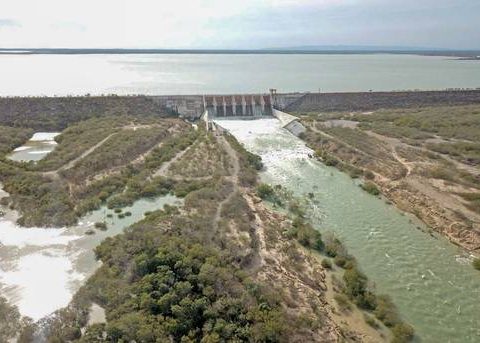L
to history of the loss of northern Mexico in the wars from 1836 to 1848 is presented as a fatality: the books speak of an insurmountable imbalance and an inescapable destiny, as inevitable as the fall of Mesoamerica into European hands. In fact, several times the fortunes on the battlefield could have turned to the Mexican side, and the rapid occupation of New Mexico and California has a reason that is almost never told. Luis Fernando Granados says: The war between Mexico and the United States (1846-48) has been an extremely difficult phenomenon to understand because it seems to need no explanation. Or is it not a bit absurd to imagine that a military conflict between the two countries could have had any other result than the rapid and overwhelming victory of the United States?
War has often been portrayed as a conflict between civilizations
as a result of the destination (manifest
or not), of the superiority of the spirit of capitalism
about primitive, backward, Catholic Mexico. But Granados recalls that the confrontation between Mexico and the United States “is just the tip of the iceberg of the historical process that transformed the subcontinent. Indeed, until the centrality of indigenous peoples in shaping North America is recognized, any explanation of the 1846-48 war will remain partial, incomplete, and Eurocentric.
It is important to bear these circumstances in mind, otherwise it is not possible to explain why the war lasted so little time, mobilized so few military personnel, provoked such a lukewarm popular reaction in the invaded country, and how it is that time and time again the United States army he was close to being defeated; that is, how is it that one of the most important events in the history of North America was resolved with so little fanfare.
The subsequent wars in the United States (1861-65) and Mexico (1858-67) were much more important in social and military terms than this one, which changed the borders of America and would change the global geopolitical balance. Granados asserts that Mexico’s defeat in that war was not due to US military superiority. The war was not decided on the battlefields or in the halls of politicians: It was decided rather in the northern plains and in the Mesoamerican towns, many years before that skirmish in Carricitos [el pretexto de la guerra, en 1846]. Those ultimately responsible for the transformation of North America bore little resemblance to those men with exuberant sideburns portrayed in daguerreotypes of the time.
.
Since the 1780s the Comanches had built an empire on the prairies. The plains from Texas to Oklahoma were Comanche soil. The US armies limited themselves to occupying half a dozen Mexican towns and claiming territory that was not theirs, but not Mexican except on the maps. The impotence of the Mexican State in 1846 has nothing to do with the stories that have been told, but rather with the effects of a secular war in which the United States had just appeared as the third party in contention (a war that would be resolved decades later with the extermination of the nomadic , thanks to the European migratory avalanche and the rifled repetition rifle): The real war for northern New Spain had been long, bloody, and exhausting. And the Comanches had won it
.
To the west and southwest of the Comanche empire lived the less organized but no less brave Apache nations, which in 1831, after 21 years of signing peace with the Spanish empire (after it was understood in Mexico, Seville and Madrid that this war could not won), they restarted the war, this time against Mexico. Víctor Orozco recounts: “Beginning in 1831, Chihuahua experienced the longest and most devastating armed conflict in its history. […] the one that left traces and deeper marks. […] there was no sphere of society where its effects were not felt… the Indian wars constitute the most important regional historical process of the 19th century […]
“When the war between Mexico and the United States broke out, Chihuahua found itself involved in a war that had lasted five decades. […] the devastation of much of the material wealth and the weariness of violence influenced the success of the US military campaign”.
These proposals assume the existence of a Spanish border, just as the history of the great Mayan rebellion from 1848 to 1903 assumes Spanish domination of the Yucatan Peninsula. That is, it assumes the existence of hispanic pax. Actually, there never was such a thing. Let us travel from the north to the south and to the east: in the classic book by Antonio García de León we find the permanent war in the province of Chiapas
and the fragile (sometimes null) Spanish presence in mountains such as those of Querétaro or Nayarit and the entire eastern part of the Yucatan peninsula.
As long as we continue to tell the story of this country without the Indians, the peasants, the women, the children, the poor, we will continue to understand nothing.
Luis Fernando Granados, Little noise and a lot of nuts
in Juan Ortiz Escamilla (coordinator), War. Victor Orozco The Indian wars in the history of Chihuahua.















